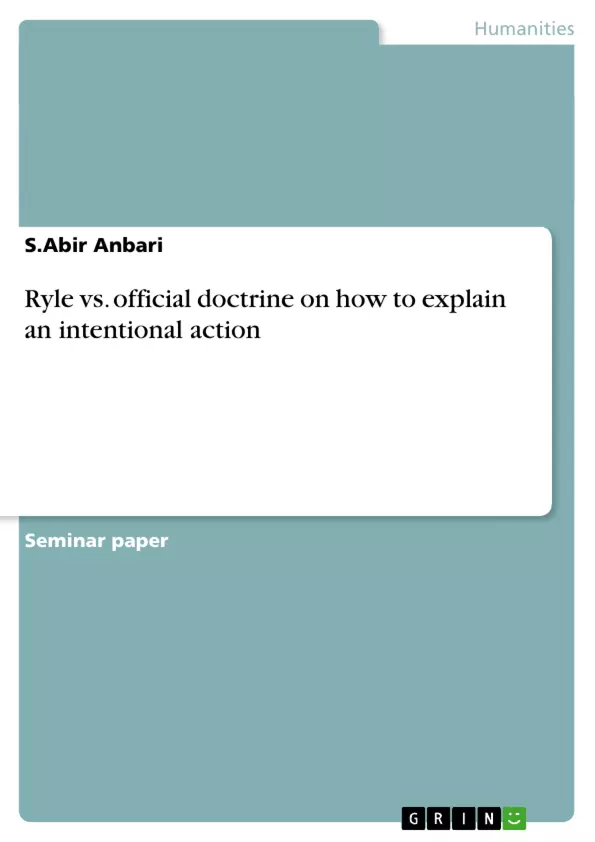The main objective of this paper is to discuss how official doctrine and Gilbert Ryle explain how one performs an intentional action. Gilbert Ryle developed his theory of mind in his book “The Concept of Mind” (1949) against the Cartesian dualism. The official doctrine is mainly originates from René Descartes “mind-body dualism”. Concerning the official doctrine, I aspire to elucidate two main aspects: Firstly, I will epitomize important aspects of mind-body “parallelism”. More precisely, I will illustrate, taking into account the official doctrine, that mind and body are two separate entities. Secondly, I will illustrate mind-body “interactionalism”.
Inhaltsverzeichnis (Table of Contents)
- Foreword
- 1. The ontological view of the official doctrine: Mind-body parallelism
- 1.1 The ontological view of the official doctrine: Mind-body interactionalism
- 1.2. The difficulties of the official doctrine
- 2. Ryle vs. the official doctrine
- 2.1 The notion of dispositional properties
- 2.2 Dispositional statements
- References
Zielsetzung und Themenschwerpunkte (Objectives and Key Themes)
This paper aims to explore how the "official doctrine," primarily derived from René Descartes' mind-body dualism, and Gilbert Ryle's philosophy explain intentional action. Ryle's theory, presented in his book "The Concept of Mind" (1949), critiques Cartesian dualism. The paper will delve into the "official doctrine's" view on mind-body "parallelism" and "interactionalism," and subsequently examine Ryle's criticism of the doctrine.
- Mind-body dualism: The separation of mind and body as distinct entities.
- The "official doctrine": Analyzing its core principles and its view on the nature of mind and body.
- Ryle's critique of the "official doctrine": Examining his arguments against the doctrine's assumptions.
- Dispositional properties: Understanding the role of dispositional properties in explaining intentional action.
- The concept of intentional action: Exploring the relationship between mental states, physical acts, and theorizing.
Zusammenfassung der Kapitel (Chapter Summaries)
The paper begins by introducing the "official doctrine," which posits a separation between mind and body. It explores two main aspects of this doctrine: mind-body "parallelism," highlighting the distinct nature of mind and body, and mind-body "interactionalism," focusing on how the two entities interact. The paper then delves into Ryle's critique of the "official doctrine," highlighting its unsound principles and its problematic view on mental events. Ryle emphasizes the importance of dispositional properties in explaining intentional action, arguing that attributing mental states like intelligence or skill is essentially attributing a dispositional property.
Schlüsselwörter (Keywords)
The primary keywords and focus topics of this work include mind-body dualism, "official doctrine," Gilbert Ryle, dispositional properties, intentional action, Cartesian dualism, mind-body parallelism, mind-body interactionalism, and theorizing.
- Quote paper
- S.Abir Anbari (Author), 2009, Ryle vs. official doctrine on how to explain an intentional action, Munich, GRIN Verlag, https://www.grin.com/document/139481



